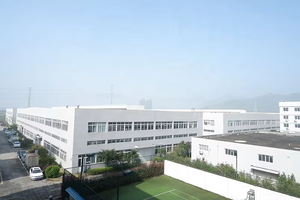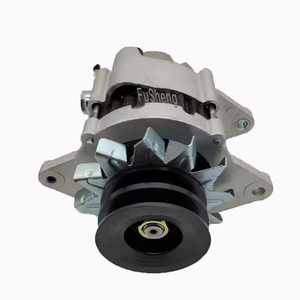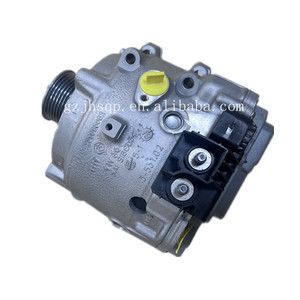
All categories
Featured selections
Trade Assurance
Buyer Central
Help Center
Get the app
Become a supplier

(996 products available)







































Rebuilt alternators are alternators that have gone through the process of reconditioning or remanufacturing. When an alternator is rebuilt, all the worn-out and obsolete parts are replaced with new ones to achieve the same functioning as a brand-new alternator. Below are different types of rebuilt alternators.
Rebuilt AC Delco alternator
AC Delco rebuilt alternators are suitable for most vehicles since they are designed to meet the specifications of the original alternator. They are ideal for cars and trucks that use the General Motors electrical system. The alternator has been tested to ensure it meets the standards of a new alternator. The case of the alternator is painted to prevent corrosion. Rebuilt AC Delco alternators are affordable and eco-friendly because they reduce the number of metals and plastics that go into landfills.
Rebuilt Hitachi alternator
Hitachi rebuilt alternators are repurposed to work as they did when they were first manufactured. The alternator is completely disassembled, and all the worn-out or obsolete parts are replaced with new parts. The alternator is then tested to ensure it meets the original equipment manufacturer (OEM) specifications. The rebuilt alternator is affordable, making it a better option for people who want to save money.
Rebuilt Ford alternator
Ford vehicles use alternators that are designed specifically for them. However, rebuilt Ford alternators are repurposed to meet the standards of the OEM alternator. All the processes, from disassembling the alternator and testing to replacing and cleaning the parts, are done according to the specifications of the OEM alternator. The rebuilt alternator is a sustainable solution for the Ford electrical system.
Rebuilt 1-wire alternator
Most alternators have a 2-wire system for connecting to the battery and the voltage regulator. However, 1-wire alternators use a single-wire connection. The rebuilt 1-wire alternator is ideal for vehicles that have older electrical systems. The alternator is disassembled and rebuilt to work as it did when it was first manufactured.
The specification of rebuilt alternators depends on which alternator has been used as a base and the modifications made during the rebuilding process. Typically, alternator specifications provide information about the maximum current output, voltage output, and physical dimensions. This section provides a general guideline for maintaining rebuilt alternators.
Regular Inspection
Regular inspections of rebuilt alternators are essential for ensuring that they function properly and have a long service life. Inspections should be done at set intervals or when there are indications of issues. During inspections, physical damage, signs of wear, and leaks should be checked. Additionally, the tightness of the belts and connections should be inspected. The battery condition and connections should also be inspected since they are an important part of the alternator's performance.
Cleanliness
Cleanliness is important for the performance and longevity of rebuilt alternators. Dust, debris, and oil build-up can cause overheating and affect the performance of the alternator. Therefore, the alternator and surrounding area should be kept clean. When cleaning, care should be taken to avoid damage to the alternator's components and electrical connections. Additionally, the ventilation ports and cooling fins of the alternator should be kept clean to ensure optimal cooling performance.
Proper Belt Tension
Proper belt tension is crucial for the optimal performance of rebuilt alternators. Loose or over-tensioned belts can cause issues such as decreased alternator efficiency, increased wear and tear on components, and even belt slippage. Therefore, belt tension should be regularly checked and adjusted as needed. When checking belt tension, the manufacturer's specifications should be followed. Typically, belt tension can be checked by pressing down on the belt in the middle. There should be a slight depression, indicating proper tension.
Overload Prevention
Overloading the alternator can result in decreased performance and a shortened lifespan. Therefore, care should be taken to prevent alternator overload. This includes avoiding the use of excessive electrical devices or components in the vehicle. If there are signs of alternator overload, such as dimming lights or a warning light on the dashboard, the cause should be investigated and addressed in a timely manner.
Temperature Monitoring
Temperature monitoring is important for ensuring the performance and safety of rebuilt alternators. High temperatures can cause overheating and damage to alternator components. To monitor the temperature, a temperature gauge or monitoring device can be used. If the temperature exceeds the specified range, the cause should be investigated and addressed in a timely manner. Additionally, attention should be paid to the alternator's ventilation and cooling system to ensure effective heat dissipation.
Electrical Connection Integrity
Maintaining the integrity of electrical connections in rebuilt alternators is crucial for ensuring their optimal performance. Loose or corroded connections can result in increased resistance, leading to decreased output voltage and current from the alternator. Therefore, electrical connections should be regularly checked and cleaned as needed. When cleaning, a suitable cleaning agent should be used, and the corrosion should be removed carefully to avoid damage to the connections.
Regular Lubrication
Regular lubrication of moving components in rebuilt alternators can reduce friction and wear, prolonging their service life. For lubrication, a suitable lubricant should be used based on the manufacturer's recommendations. When lubricating, the appropriate amount of lubricant should be applied to avoid over-lubrication.
Professional Maintenance
For the maintenance and repair of rebuilt alternators, professional skills and knowledge are required. Therefore, professional maintenance and repair services should be used when needed. Professional maintenance personnel have the necessary tools and knowledge to ensure that rebuilt alternators are maintained and repaired correctly. Additionally, professional maintenance personnel can perform more detailed inspections and troubleshooting, identifying and resolving potential issues.
Choosing the right rebuilt alternator for a vehicle can be a difficult task. Here are some factors to consider when choosing rebuilt alternators.
It is advisable to have an expert help when replacing a rebuilt alternator. This is because, even though one can do it as a DIY project, it requires a lot of attention and care. Every alternator is different in a way. It is important to go through the manufacturer's manual and see what they have to say about the alternator being replaced. That said, here are the general steps for replacing rebuilt alternators.
First and foremost, one will need to gather the right tools for the job. These include a wrench set, ratchet and socket set, a new rebuilt alternator, a screwdriver set, and a torque wrench. It is also important to have safety glasses and a battery terminal puller. With the right tools in place, the next step is to disconnect the battery. The negative battery cable should be disconnected from the battery using a 10 mm wrench. This is done to avoid any electrical shocks or short circuits when replacing the alternator.
After that, locate the old alternator and remove it from the vehicle. This will be done by loosening the belt tensioner and removing the drive belt from the alternator. The tensioner and pulley are going to be removed from the alternator as well. Loosening the alternator bolts will help loosen up the alternator and make it easy to remove. The electrical connections on the alternator will be disconnected, and the old alternator will be removed from the mounting.
Now that the old alternator has been removed, the next step is to install the new rebuilt alternator. First, the rebuilt alternator is going to be installed into the mounting, and all the electrical connections will be connected just like they were in the old alternator. The alternator bolts will be tightened, and the tensioner and pulley will be reinstalled. The drive belt will be installed onto the rebuilt alternator, and the technician will use a wrench to loosen the belt tensioner.
Finally, the technician will reconnect the battery cables to the rebuilt alternator, and the positive terminal will be disconnected using a battery terminal puller. At last, the mechanic will start the vehicle and check for any unusual noises or warning lights. After ensuring everything is working perfectly, they will close the hood and lower the vehicle.
Q1: How long do alternators last?
A1: Alternators generally last between 80,000 to 150,000 miles. However, the longevity of alternators can be affected by different factors such as the alternator's quality, driving conditions, and the wear and tear of the other connected components.
Q2: What is the difference between a rebuilt and a brand-new alternator?
A2: A rebuilt alternator uses original components that have been cleaned, inspected, and repaired. On the other hand, a brand-new alternator is manufactured using completely new components. This makes alternators that are rebuilt more cost-effective than brand-new alternators.
Q3: How can someone tell that their alternator has a problem?
A3: The common signs of a faulty alternator are a warning light on the dashboard, strange noises such as grinding or rattling when the alternator is working, and dim or flickering lights. Other signs are electrical accessories not working or slow and hesitant engine startup.
Q4: Do alternators that are rebuilt last the same as new alternators?
A4: Yes, rebuilt alternators can last as long as new alternators. This is because the alternator's longevity depends on the quality of the rebuilding process and the components used. If the alternator is rebuilt using high-quality parts and the rebuilding process is done correctly, the alternator can last as long as new ones.